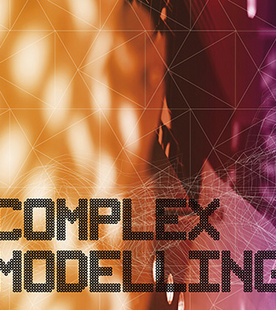Persistent Model #2
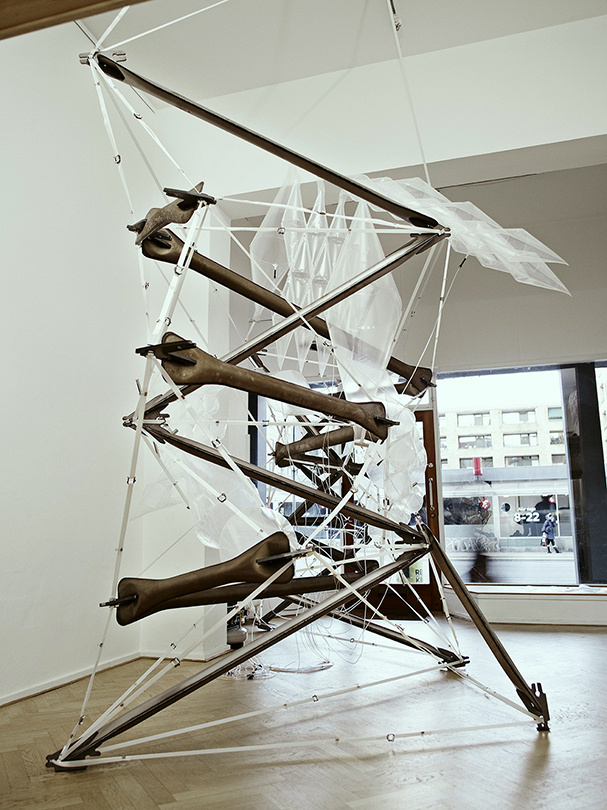
A full-scale installation and exhibition by CITA.
This project builds directly upon the prior work of Persistent Model #1 which investigated the material-based self-forming process of metal inflation. Persistent Model #2 considers a shift in scale to explore the spatial and structural potentials of assemblies that utilise metal-inflated components.
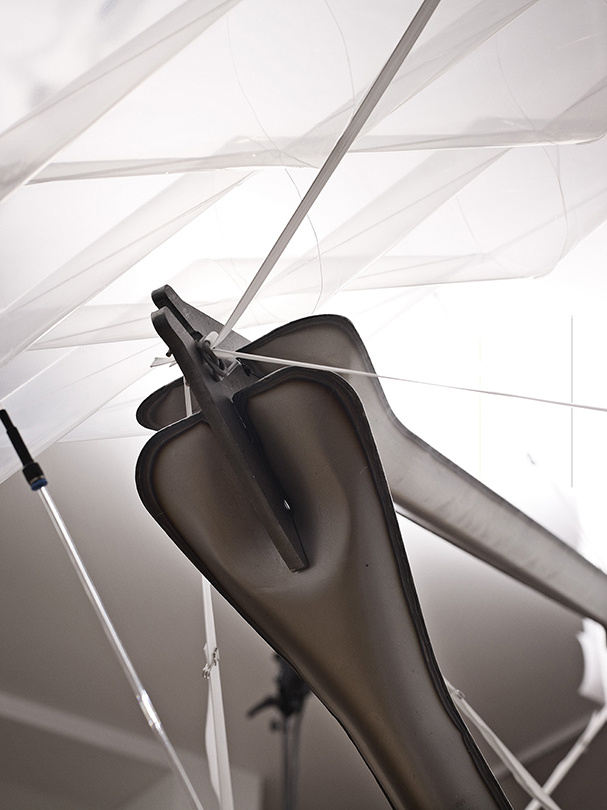
The project revolves around two principle questions, one of which is materially focused and the other computational.
The material question centres on how to connect discreet metal components that will undergo inflation. The challenge is how to preserve the component’s integrity as a pneumatic body. This aim shifts attention away from conventional steel connection methods such as bolting, riveting and screwing which are predicated on puncturing the material to achieve a mechanical junction.
The computational question centres on simulation. The challenge here is to incorporate the simulation of discreet inflations at the scale of the component and to compute their effects upon the chosen structural morphology.
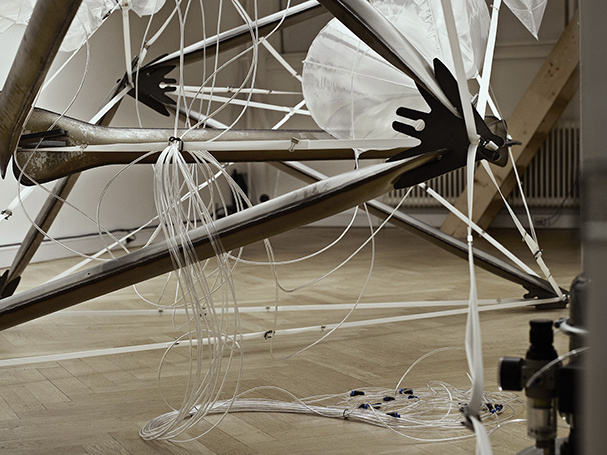
Tension based structures, such as tensegrities, are relevant models for systems that need to accommodate continual kinetic adjustment. Ideal tensegrities also offer a structural approach to the material issue of junction because of the discontinuity between compression elements. However, the architectural and spatial potentials in ideal tensegrities are often limited, and tend to remain subservient to the demonstration of structural principles. The double-layer topology of Kenneth Snelson’s Planar Weave (1960) is therefore taken as a starting point because the planar figure is more architecturally suggestive and the topology offers greater opportunity to explore geometric irregularity for spatial purpose. This is largely due to permitting connectivity between individual compression members into ‘sets’ that ‘float’ within the field of tension.

Nodes define points of contact between tension and compression members. These are laser-cut from 10mm steel plate and provide location points for connecting steel cushions. The method of connection is friction based clamping resulting from the detailing of the cushion’s profile. This clamping detail is activated by the material’s self-forming mechanisms when inflated.

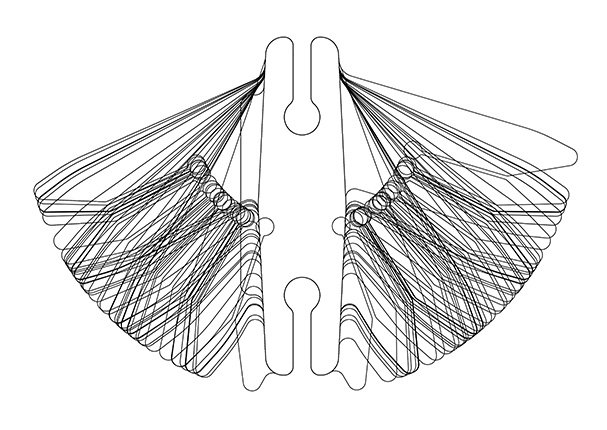
Persistent Model #2 demonstrates how computationally supported design allows a deep exploratory engagement with the sensitive dependency between structural performance and geometry in tensegrity structures. By integrating parametric tools with analytical methods using mass-spring systems, the viability of irregular geometric configurations to attain self-equilibrium states can be assessed in real-time, leading to new spatial expressions for this structural typology.
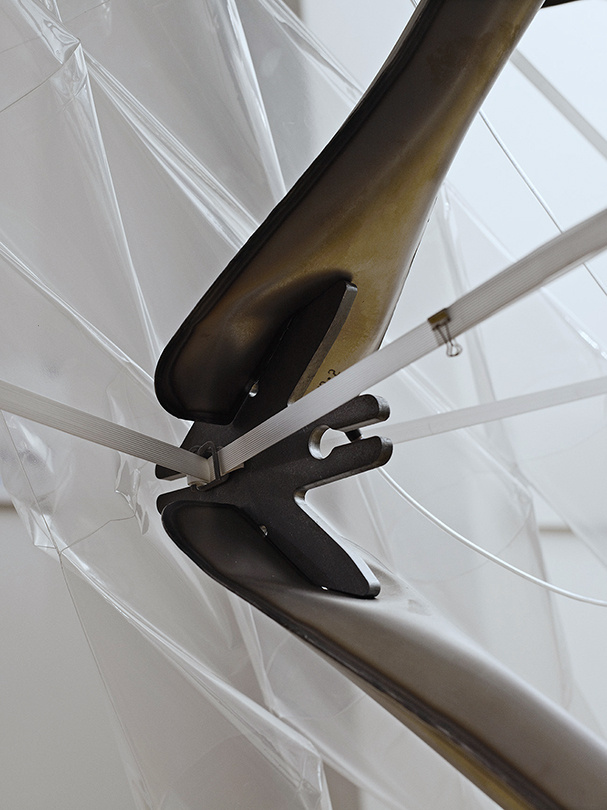
Design Team
Phil Ayres, Anders Krogdal Nielsen, Roxana Aron, Kristjana Sigurdardottir
Industrial Support
Beyer Teknik Aps
AMCOR
FESTO
Sponsors
Dreyers Fond
Royal Danish Academy of Fine Arts, School of Architecture, Copenhagen
Exhibitions
Exhibited at the gggGallery, Copenhagen (02-07.2013)
Currently exhbited as part of the 'Smart Flexibility: Advanced Materials and Technologies' touring exhibition.
Venues include: Materfad, Barcelona (06.2014-02.2015) & RMIT, Melbourne (from 06.2015)
Publications
Ayres, P., Støy, K., Stasiuk, D. & Gibbons, H.
“Multi-scalar Shape Change in Pneumatically Steered Tensegrities: a cross-disciplinary interest in using material-scale mechanisms for driving spatial transformations” in FABRICATE: Negotiating Design and Making, Gramazio, F., Kohler, M. & Langenberg, S. (eds), gtaVerlag, pp:256-265
Photography
Anders Ingvartsen


